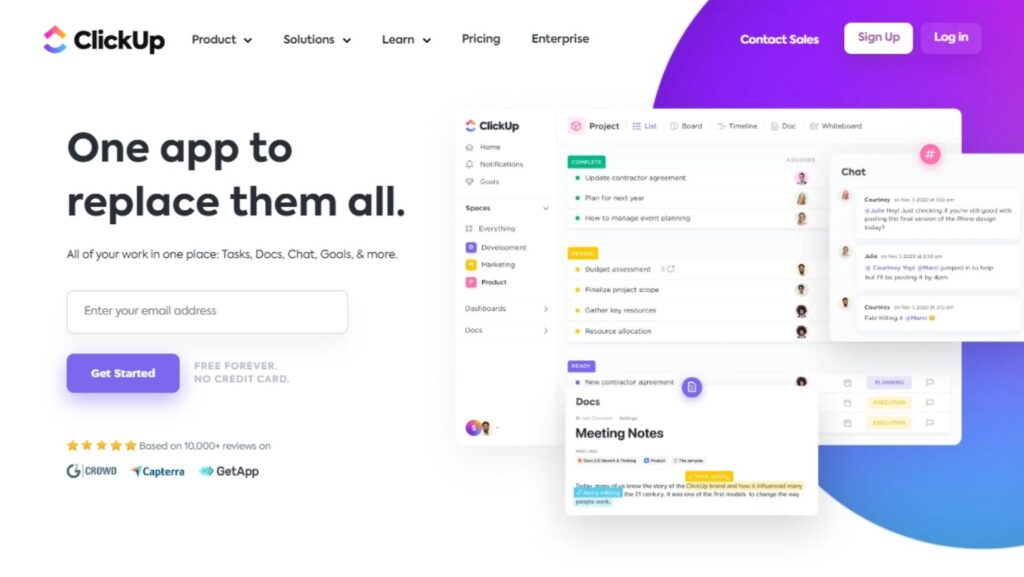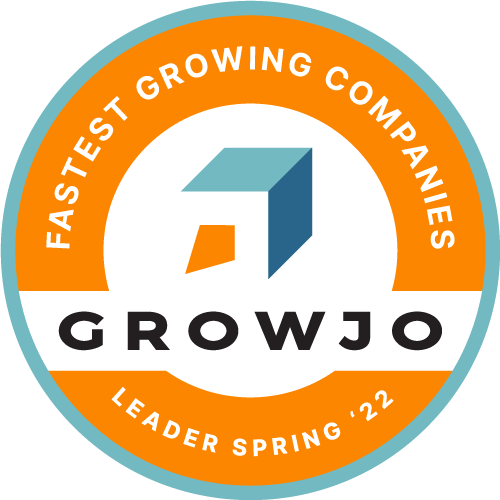24 Business Automation Tips For Growth and Success
In essence, business process automation is the application of artificial intelligence (AI) in business, allowing some processes to skip needing human intervention. Once you’ve figured out how to automate your business, you can experience smoother, faster workflows, and higher productivity. Plus, you can make better, data-directed decisions for the growth of your business.
Automation has made business operations more manageable and smoother, especially during the challenging times of global lockdowns and workforce adjustments.
If you’re looking for information on how to automate your business, we’ve got the best tips to help you get started.
Benefits of Automation
Wondering why you should actually consider automation in your business processes? Here are the best reasons and benefits for you.
1. Scalability
Business process automation is highly scalable. This means that this practice can grow as your business does.
It’s not something you can implement only during the early or growth stages of a business. Automation is already integral in the operations of small businesses and large enterprises.
Really, there’s no right time for you to get started automating parts of your business. You can start this alone, with just one other team member, or with a large team.
2. Reduced Human Error
With AI delivering results in some areas of a business, there’s less room for lapses and skill-based errors, which even experienced employees experience.
Relying on AI to trigger processes or create repetitions and pattern-based reminders can help an entire team become more efficient at taking all the necessary steps to complete tasks.
This reduces the occurrence of forgotten steps, lapses in judgment, etc., and helps with completing tasks according to standard operating procedures.
3. Reduced Labor Cost
Delegating tasks to AI through business automation also means there’s room for more tasks to get done by everyone.
You can even start new processes that largely rely on AI processing and delivering information to the right team member.
This can cut down the need for additional team members, or work hours, effectively reducing a business’s labor costs.
4. Automated Performance Tracking
It’s not uncommon for automation apps to also create performance reports for the processes that you delegate to AI.
This means you easily get reporting dashboards and data analytics on relevant statistics and metrics for your business.
Social media automation apps do this by creating reports on engagement, reach, impressions, reactions, and other social media buttons. You can schedule website reports on Google Analytics that deliver straight to your inbox every specified period. Email automation also tracks interaction and traffic stats.
Take a look at the automation tools you use and see if it provides data-backed insights automatically.
5. Enhanced Productivity
Automating processes in your operations unlocks a lot of free time for everyone in your company to work and improve in their roles.
They can either dedicate this time to getting creative in marketing, learning new skills and productivity tools or simply getting more work done.
As you automate more processes and tasks in your workflow processes, you’ll get to see just how scalable automation is when more team members experience reinvented productivity.

How To Automate Your Business for Growth and Success
Automation can introduce a lot of enhancements to your business. This may seem like it also requires a lot of work to get started on, but it’s actually not.
Here are the five steps of how to automate your business.
1. Check Your Tech Stack
Resourcefulness is valuable in starting out with digital business transformation and business process automation. You can always try to start with what you currently have.
Check out your CRM, your productivity tool, or your marketing tools. They may already have some automation that you can enable to get started.
If you’re using apps like ClickUp and Asana, you can set up triggers based on task progress. This can help your team members work faster.
This can go as far as automatically scheduling social media posts and email blasts once drafts are finalized and approved.
Note that the important step in this process is to identify which tasks or processes are repetitive and if your current tools can help you trigger certain steps faster.
2. Find More Tools
The next thing you need to do is to find more tools that can help you tie processes together. You may opt for all-in-one solutions that let you streamline everything from customer touchpoint to marketing, sales, and nurture and feedback campaigns.
Robust CRMs like HubSpot and Salesforce can allow for this kind of capability and have flexible options for many app integrations.
If that looks like a huge amount of data migration and clerical work, you can opt for a tool like Zapier to let you set up triggers from one app to another.
Doing this can cut down huge amounts of waiting time between team members who are working on the same project or task. Zapier can also help information flow from one department to another much faster.
3. Implement the Culture
Once you’ve set up your triggers, you need to make sure that automation is central to your team’s workflow by institutionalizing the practice.
Make sure everyone is trained on the same tools and updated on how its automation features are implemented in your process.
By ensuring that your employees rely on automation, they can familiarize themselves with the practice and proceed to find more workflows they can automate.
4. Hire Support
Once more of your processes are automated, you can hire someone dedicated to making sure your workflows are optimized. This can be your first virtual administrative assistant.
If you don’t already have one, you can hire a virtual admin to support your team in following workflow automation and standard operating procedure.
Your admin can help cover daily tasks that need human intervention and help team members troubleshoot problems they encounter with your automation setup.
Virtual assistants are trained to work with automation apps and optimize workflows, so you can hire one to be your in-house automation ninja.
They can also find more ways to introduce AI and automation into your business, and address administrative skill gaps in your team.
Hiring a virtual assistant is highly cost-efficient that even other firms operate with teams of virtual assistants. A hybrid working environment also helps deepen your team’s practice and understanding of automation and digital business transformation.
5. Hire an Expert
When you’re fully committed to having the best automation solutions in your business, it’s time to get the help of an expert.
You can outsource to a digital adoption platform provider so they can create a customized and scalable solution for your business’s current workflow.
There are also IT experts you can consult or hire on a consultative basis to help you figure out the best automation solutions for your business’s needs.
They can introduce you to a multichannel automation platform for all your departments or even help you maximize the tools you’re already paying for.
Sample Automation Setups
Know how to automate your business for higher productivity and optimized workflows. You can get started right away with these simple setups.
1. Auto-Tag Contacts Entering Your CRM
Whenever contacts are automatically or manually put into your CRM, you can set up a trigger that tags them to the appropriate category.
You can group them however you want, and this helps with lead processing, tracking lead generation, lead scoring, and setting up targeted ads and emails.
2. Trigger Email Campaign Based On Customer Touchpoint
You can also try automating new emails for customers and leads depending on how they’ve made contact with your brand.
You can automate registration forms, follows, engagements, and subscriptions to send emails designed and based on which of these touchpoints were able to collect information from your audience.
You can set up a Zap using the popular app, Zapier, to process new connections from LinkedIn to be added to your CRM or a spreadsheet, and then send a welcome email that invites these users to engage with your brand more, or take an action.
As you get more familiar with more tools and automation, you can add more steps to this process such as email verification, auto-tagging, lead scoring, and ad targeting.
3. Welcome New Subscribers With An Email
Just like the previous example, you can automate your welcome emails coming from a subscription invite page.
You can set up an entire campaign on Mailchimp to help your new subscribers warm up to your brand. This campaign can include a welcome email, followed by another one, depending on their level of engagement with your brand in the past few days.
This can help create a personalized experience for your subscribers, and further help in building a solid relationship with them as prospective customers.
4. Automate a Feedback Loop For Your Customers
Another automation you can easily set up is a feedback loop for your customers. You can start out with a simple email triggered by a purchase.
You can then follow that up with another email asking for their feedback in the process. Getting to submit feedback is already great for the customer’s experience but you can further incentivize this by providing discount codes for those who answer your survey.
5. Recur Regular Tasks On Your Collaboration Platform
If you track tasks and meetings through Google Calendar, ClickUp, or Asana, you can find out which ones are recurring, and set them up to repeat on their own.
It’s not just the reminders you can keep track of, but you can also include certain details like the digital assets required, reports and data needed, or the steps needed for the completion of a task.
You can also set up other automation in your collaboration tool, like auto-assigning someone on your team a task every time you create a new one. Or, you can automatically create a new task when one gets finished.
Doing this once can save a lot of time when you have a lot of repetition in deadlines, collaborative work, and daily or weekly meetings.
Team members are able to instantly see what’s coming up in their calendars, and know what materials they need to prepare before a deadline or a meeting.
6. Retargeting Campaign For Digital Advertising
Executing digital marketing campaigns can also be made easier by integrating automation into the process.
Digital ad management tools typically offer features where you can easily set up a retargeting sequence for your audiences. This doesn’t include coding and a deep understanding of how cookies work.
Instead, audiences reached by your main advertisement or people that visit your website are automatically profiled so they can receive new retargeting ads you’ve tailored for the audience segment that the AI has identified them with.
7. Get Automated Reporting Dashboards
Digital marketing is one business area that largely benefits from automated reporting dashboards.
This is when you use apps like eClincher, Later, and Google Analytics to aggregate data from your audience, into a reporting dashboard.
This easily slashes down what could be an endless search and processing of data. Instead, marketers are able to access the data that they want to observe anytime, anywhere.
Reporting dashboards are also available for flow management systems, eCommerce and inventory management platforms, and a lot of other business applications, so make sure to check what options are available for you.
Helpful Automation Tools
Here are some productivity platforms that can help you get started with business process automation, and stick with you as you scale your automation strategy.
1. Zapier

Zapier is a tool that helps you automate processes from one app to another. It does this by identifying trigger actions from one platform and executing a directed action on the other.
By setting up a “zap”, you can identify a trigger in app A that will send information and execute an action, or “task” in App B.
With Zapier, there’s no need to learn code. You can start automating your workflows by integrating Zapier into the two apps where you would usually process data manually.
You can use Zapier to send contact information from your website to a spreadsheet or CRM, send emails after someone fills out a survey, and more.
2. ClickUp

ClickUp is a project management and collaboration tool for personal and business use. This platform not only lets you and your team work on tasks simultaneously but also gives access to a list of features enough to create a customized workflow platform.
ClickUp allows automation in the platform, letting your team be notified whenever there’s progress on a project or task.
Recurring tasks are also easily identifiable and created automatically in ClickUp. This can be used to create recurring reminders for repetitive tasks, meetings, deadlines, payments, etc.
3. Google Forms

Google Forms is another automation tool you can use for many different purposes. You can create feedback forms, sign-up sheets, surveys, and other sorts of questionnaires.
Responses are automatically tallied into a worksheet, making it easy to create graphs that show the overview of your survey results. You can even get email notifications whenever new responses come in.
Google Forms can be highly useful for lead generation strategies, especially when your team already uses a lot of apps in the Google Workspace. You can connect Google Forms with Zapier to send information to other apps and platforms.
4. Google Analytics

Google Analytics is a web management tool helpful in getting website traffic analytics. This tool can help you easily track how your digital marketing campaigns are performing.
Not only that, but it can also show you a preview of how your audiences are reacting to your digital marketing activities by showing categorized traffic sources.
You can even create customized reports in Google Analytics so you can easily see and compare your key performance indicators for specific online marketing projects.
5. Mailchimp

Mailchimp is an email marketing platform that allows users to set up automated marketing campaigns.
You can use Mailchimp to send emails to your leads and customers based on their most recent engagement with your ads, landing pages, or social media calls to action.
Using automation on Mailchimp can help you stay in touch with leads in different areas of your funnels simultaneously, which helps in increasing conversion rates.
6. Shopify

Shopify is an eCommerce platform that helps businesses create an online shopping experience for their customers. The platform also supports automated workflows that can be customized by business owners.
You can use Shopify to automate workflows related to customer success, retention, loyalty programs, and sale promotions.
Shopify can also help businesses with automated workflows for customer segmentation and profiling, as well as inventory management.
7. Integrately
If you're looking for an alternative automation integration app, Integrately is a great choice. At a lower price point than Zapier, Integrately also lets you set up automation sequences from one app to the other.
With Integrately, you can easily set up triggers in your sales and marketing funnels to have your database populated with new contacts, and start sending them emails from your campaign.
Outsourcing Automation Support
Once you’ve figured out how to best automate your business processes, the task is to scale this transformation, while making sure the culture of relying on technology for efficiency is retained and practiced.
Business owners can easily hire virtual assistants as an inexpensive solution to this. Remote assistants are experts at providing support and accomplishing specialized tasks at the same time.
With a virtual assistant, you can easily get daily administrative support or marketing expertise for your team, and a dedicated team member for providing support with your automation strategies.
If you’d like to grow your business with the help of a professional virtual assistant, feel free to fill out this form so one of our Consultants can get in touch with you.
More Articles From Virtudesk:
Share this article
Meet our Most Trusted
Partners & Clients

Byron Lazine
Co-Founding Chief-of-Operations at BAM (Broke Agent Media)I’ve been using Virtual Assistants for years throughout all of my companies. Once we found Virtudesk the process got even easier and allowed us to scale out our hiring. Highly skilled and accountable professionals. 100% recommend!

Rebecca Julianna James
Realtor / Content CreatorBefore getting started with Virtudesk I had my doubts that they would find what I was looking for. I needed a very particular person to add to my team and let me tell you I am highly pleased! My virtual assistant Myril is the best! I am excited to grow my socialmedia accounts with her. Thank you Virtudesk!

Chelsea Erickson
Realtor La Belle RE GroupI am very happy with the assistance Virtudesk is providing for my real estate business. This is a newer position for my company and we are working through the creation and efficiency.















